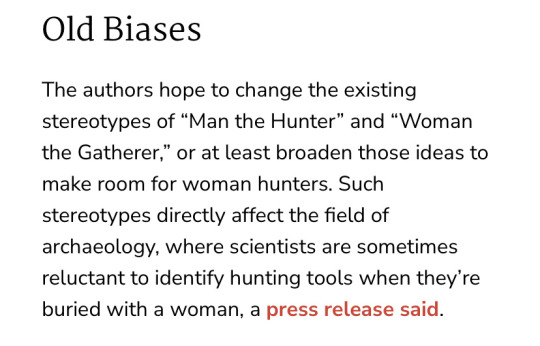#aboriginal myths
Text

Day 1 of My First Challenge, Inktober. Here we have is the Australian Creature, a Bunyip.
A Swap Monster that is said to inhabited swamp areas such and would literally kill Humans if anyone were to went near in the Water. The Bunyip's design changes over the years since no one really knows for sure what kind of Beast these creatures are supposed to be. Some depict them as Seal-like (I suppose, Walrus-like, I assume?), a Canine-like beast, or other drawings show them being reptilian like a Crocodile or an Alligator.
The Word, "Bunyip" comes from the Aboriginal word, "Banib" which means "Devil". Although with that in mind behind that name, Aborigines believe that there are spirits in a realm called the "Dreamtime" that might've created the world and they also believe that Bunyips were mainly sent by spirits to punish People who do sinful things.
Bunyip (c) Aboriginal Mythology
#inktober#inktober 2023#inktober challenge#bunyip#aboriginal mythology#australian#australia#australia folklore#aboriginal myths
13 notes
·
View notes
Text
The Wandjinas [Australian Aboriginal mythology]!

In the belief system of the native Aboriginal people of Kimberley, Western Australia, the peculiar rock paintings called ‘Wandjina’ play a significant cultural role. The depicted spirits have a very distinct appearance with a mouthless face, large eyes and their signature headdress.
Long before humans existed, the Wandjinas populated the earth along with Ungud, a divine being. These mysterious spirits are each responsible for the creation of a specific feature of nature and the world we live in.
And so these beings wandered around the world, shaping it into the landscape we can see today. When their work was done, each Wandjina wandered into a cave and died, transforming into the painting. This is actually an important distinction: though I’m using the word ‘painting’ in this article, traditional Aboriginal belief holds that the Wandjinas were never actually painted by someone. Instead, they appeared on the stone walls as the reincarnation of the Wandjina’s living form.
As such, it is important that these paintings are renewed every year (this typically happens at the end of the dry season), for if a painting is lost then the spirit of that Wandjina will die. If the Wandjinas are lost or destroyed, the world would end and there would be no more rain; the Earth would become a barren desert landscape and the pillars that hold up the heavens will break.
Renewing a painting of a female Wandjina in particular will replenish the fertility of the people, which supposedly causes an increase in births. It is actually unknown why Wandjina are always depicted without mouths, but this is an important characteristic as native people claim it would be unthinkable to add one. Anthropologists have speculated that this symbolizes the spirits’ life-giving nature: they always create, and never consume.
Sources:
Blundell, V. J., 1974, The Wandjina Cave Paintings of Northwest Australia, Arctic Anthropology, 11, pp. 213-223.
Cotterell, A. et al., 1999, Encyclopedie van de Wereld Mythologie, Parragon, 320 pp.
(image 1: Wandjinas near the Barnett River. Image source: Graeme Churchard)
37 notes
·
View notes
Photo

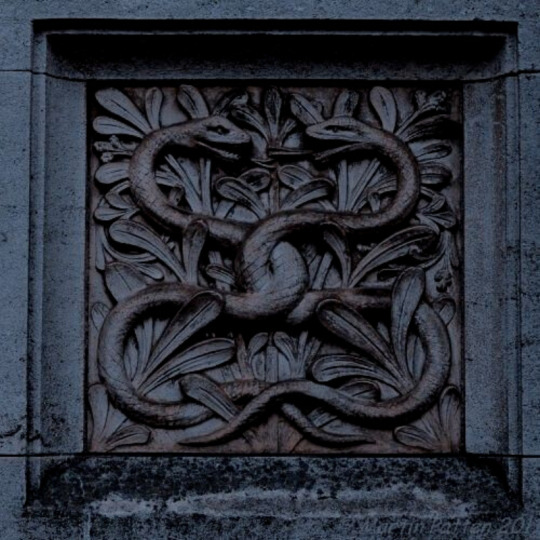





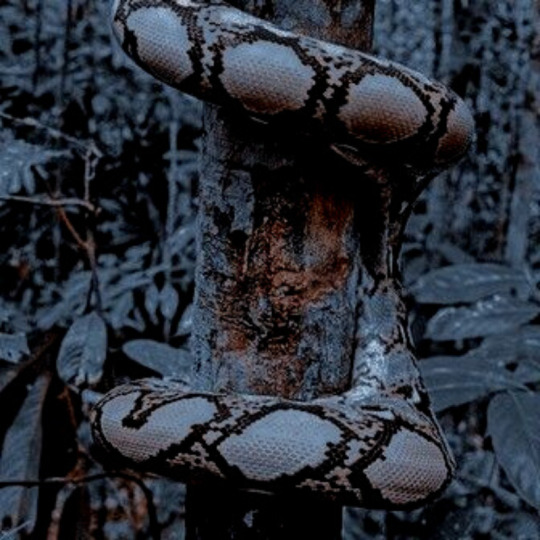
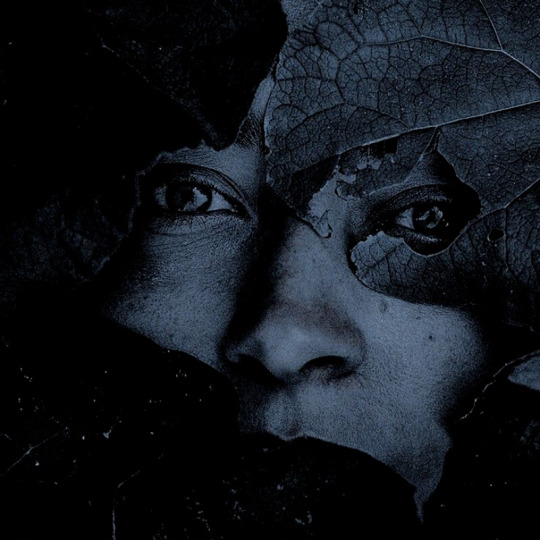
aboriginal (jawoyn) mythology: eingana
eingana, otherwise known as the "dreamtime snake,” is the mother of all water animals and humans. she is a snake goddess of death who lives in the dreamtime.
#aboriginal mythology#jawoyn mythology#eingana#goddesses#snake goddess#aboriginal myth#mythedit#*mine*#requested
284 notes
·
View notes
Text

Okay this one is actually a Myth! The Mimi are a fae people from north Australia, residing there for over 50,000 years. They’re extremely thin and lanky, so delicate that they spend most of their time living in rock crevices. They love pets and painting, known to only grow aggressive if one of their many pets are harmed (this can range from a crocodile to a butterfly, it’s insane). They taught the aboriginal humans to hunt, cook food, paint and make fire, in return they are respected and left in peace. The Mimi have no written language, only art.
#touhou#touhou project#touhou oc#touhou style myths#zun style art#zun style#aboriginal mythology#mimi#mimih spirit#fae
17 notes
·
View notes
Text
Okay so I got curious about the Yowie Yahoo from Scooby-Doo Legend of the Vampire, cause I saw a reference to a Yowie in an article on Australian folklore. And it turns out the two entities are only the same in name and location!!
This is part of the wikipedia article for the Yowie

This is the Yowie Yahoo in Scooby-Doo Legend of the Vampire

As you can see, they took the name of a creature from Aboriginal myth, and said no, we're gonna do a vampire. Even the Yahoo part of Yowie Yahoo is another name for this same creature apparently!! (As well as a term for the bigfoot in the US in some areas)
This is especially strange to me, cause the literal Next Film in the DTV franchise is Monster of Mexico, which took the chupacabra, a creature often described as being like a lizard or dog and Drinking Blood (a known vampire trait) and turned it into
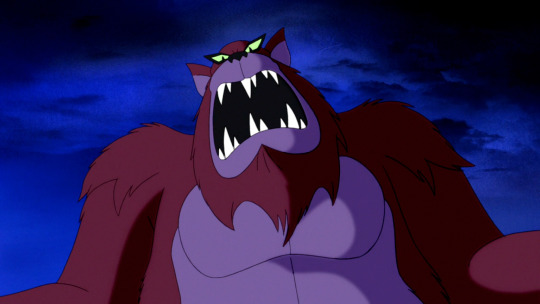
A bigfoot like creature!! They flipped em!!
#scooby doo#scooby doo legend of the vampire#i am not an expert in cryptozoology nor in Aboriginal myths so if someone else is please feel free to correct me!!#yowie#m post
53 notes
·
View notes
Photo
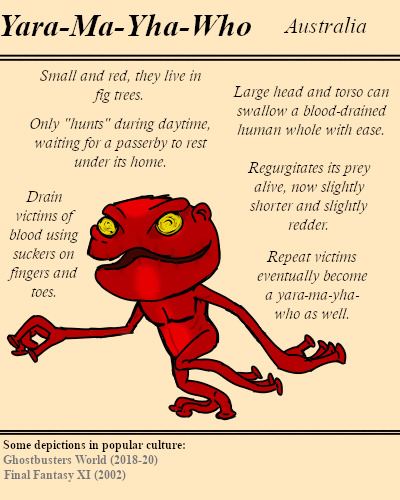
A strange diurnal creature, draining blood before swallowing its prey whole. It at least releases you alive, but try not to get caught more than once.
#BriefBestiary#bestiary#fantasy#mythical creatures#mythology#folklore#bloodthirsty#legend#australia#vampiric#australian aboriginal folklore#fig tree#monster#myth#aboriginal mythology#yara-ma-yha-who#yaramayhawho#aboriginal folklore#digital art#australian mythology#australian folklore#australian legend
29 notes
·
View notes
Text
the way there are TWO alleged cannibal convicts transported to tasmania who both escaped from sarah island, alexander pearce and thomas kent. like you have two to choose from. dream blunt rotation.
thomas kent wasn’t a survival cannibalism guy like pearce was, he was supposedly sweeney todd-ing it up back in england, which is what he was sent here for. he escaped and they found him by a river, now known as the pieman.
#i need a thomas kent gf#and theres this common (less so now) misconception that the pieman is named after alexander pearce...#in what WORLD was he making pies out of people???#in what world did he get that far north??#shut up ulrike#kannibalismus#alexander pearce#thomas kent#tasmania#the myth believed by colonisers at the time that aboriginal people practised cannibalism vs all these fucking white guys in the bush EATING#PEOPLE#?????????????#projecting much.#its pretty hard to find stuff about thomas kent online sigh i should go library
5 notes
·
View notes
Text
Monster Month: Tiddalik
Google Image Search
The Tiddalik comes from Australian mythology and is connected to a popular creation myth. Specifically, this creature comes from the Australian Indigenous Dreaming Stories, which some people call ‘Dreamtime’. To be honest, I couldn’t figure out if some of these terms were correct or born from brutal colonization. That’s not what this post is about, so let’s get to the…
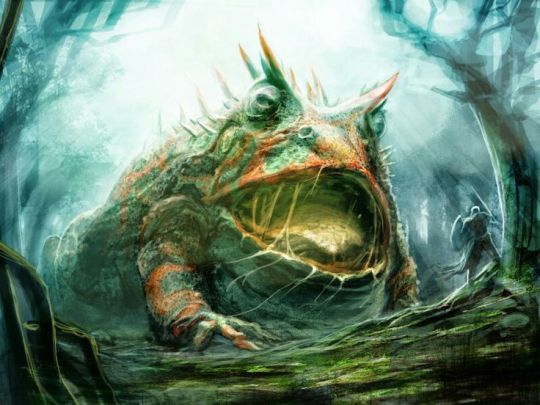
View On WordPress
#aboriginal#Australia#beasts#creation myths#creatures#folklore#frogs#monsters#mythology#october#Tiddalik
0 notes
Text
UN agency removes document that states Tasmanian Aboriginal people are extinct
youtube

#united nations#lutruwita#tasmania#taspol#tasgov#politas#indigenous#aboriginal#australia#racism#racist#myths#myth#racist myth#ausgov#auspol#neoliberal capitalism#fuck neoliberals#anthony albanese#albanese government#antinazi#antinationalist#antiracism#how to be an antiracist#antiracisteducation#class war#classwar#fascism#antinationalism#indigenous rights
0 notes
Text
Eventually the baby died, and in her state of extreme grief and anger, Bulthuku lit Thuwathu's ngampirr with a firestick and he was burnt alive inside, with the structure collapsing on him.
"Design: Building on Country" - Alison Page and Paul Memmott
#book quote#design#building on country#story#myth#lardil people#bulthuku#willy wagtail#thuwathu#rainbow serpent#death#grief#anger#burnt alive#fire#house fire#indigenous australia#aboriginal australian#nonfiction#willie wagtail
1 note
·
View note
Text
Chthonic - Takao
2011
Chthonic is a Taiwanese heavy metal band, formed in 1995 in Taipei. The group incorporates influences from traditional Taiwanese music, including adaptations of folk songs and the use of traditional instruments, most notably the erhu (often called the hiân-á in the band's native Taiwanese Hokkien). Their stated goal is to use their music to bring ancient history and mythology into the modern era especially to build awareness of the myths of Taiwan and tragic events in that country's history. Since 2011 their trademark erhu has been complemented with stringed instruments including the koto and shamisen, as well as Tibetan Bells and shakuhachi and Seediq hunting flutes, the last of which are traditionally used by the indigenous people of Taiwan.
Takasago Army is Chthonic's sixth studio album, released in 2011. The title is a reference to the Takasago Volunteers in the Imperial Japanese Army, recruited from the Taiwanese aboriginal tribes during World War II. Takasago is an ancient Japanese name for Taiwan. This album serves as the final record in Chthonic's "Souls Reposed" Trilogy. Takasago Army reached number 109 on Japan's Oricon music chart, and the video for the song "Takao" was nominated for the 2012 Golden Melody Award in Taiwan for best music video. The album was named the year's best melodic black metal album by the critics' webzine Metal Storm, and French music critics' site Boulevard Brutal selected Takasago Army as the best black metal album of the year. The Japanese rock magazine Burrn!! awarded the band a number 7 rank for best album of the year and number 23 for best heavy metal band.
"Takao" received a total of 54,3% yes votes.
youtube
675 notes
·
View notes
Text
When I refer to zionists as textbook genocide denialists, btw, I'm talking about literal textbooks I was assigned in my genocide studies classes. Here's an excerpt from one, Genocide: A Comprehensive Introduction by Adam Jones, detailing common genocide denialist arguments. I've bolded arguments that I've personally heard from zionists (including ‘neutral’ fence-sitters, who are on the side of the oppressor by default) — during the current Gaza genocide, but also in reference to the entire history of the genocidal zionist occupation. It's important to learn to recognize these arguments and call them what they are, genocide denial, rather than excusing denialists as simply misinformed or misguided.
"Among the most common discourses of genocide denial are the following:
'Hardly anybody died.'
Reports of atrocities and mass killings are depicted as exaggerated and self-serving. ... Photographic and video evidence is dismissed as fake or staged. Gaps in physical evidence are exploited, particularly an absence of corpses. Where are the bodies of the Jews killed by the Nazis? (Incinerated, conveniently for the deniers.) Where are the bodies of the thousands of Kosovars supposedly killed by Serbs in 1999? (Buried on military and police bases, or dumped in rivers and down mineshafts, as it transpired.) When the genocides lie far in the past, obfuscation is easier. Genocides of indigenous peoples are especially subject to this form of denial. In many cases, the groups in question suffered near-total extermination, leaving few descendants and advocates to press the case for truth.
'It was self-defense.'
'The onset of [genocidal] killing,' wrote Jacques Sémelin, 'almost always seems to involve this astounding sleight of hand that assimilates the destruction of civilians with a perfectly legitimate act of war. From that moment on, massacre becomes an act of self-defense.' Murdered civilians - especially adult males – are depicted as 'rebels,' 'brigands,' 'partisans,' 'terrorists.' The state and its allies are justified in eliminating them, though unfortunate 'excesses' may occur. Deniers of the Armenian genocide, for example, play up the presence of armed elements and resistance among the Armenian population – even clearly defensive resistance. ... Genocide may also be depicted as an act of pre-emptive self-defense, based on atrocities, actual or alleged, inflicted on the perpetrator group in the past – sometimes the very distant past. Sémelin, for example, has explained Serbs’ 'insensitivit[y] to the suffering they caused' in the Balkan genocide of the 1990s in terms of their inability to perceive any but 'their own woes' ... A substrategy of this discourse is the claim that 'the violence was mutual.' Where genocides occur in a context of civil or international war, they can be depicted as part of generalized warfare, perhaps featuring atrocities on all sides. This strategy is standard among the deniers of genocides by Turks, Japanese, Serbs, Hutus, and West Pakistanis – to name just a few. In Australia, Keith Windschuttle used killings of whites by Aboriginals to denounce 'The Myths of Frontier Massacres in Australian History.' ... Sometimes the deniers seem oblivious to the content of their claims, reflecting deeply embedded stereotypes and genuine ignorance, rather than malicious intent – as with the CNN reporter who blithely referred to the world standing by and 'watch[ing] Hutus and Tutsis kill each other' during the Rwandan genocide of 1994.
'The deaths weren’t intentional.'
The difficulties of demonstrating and documenting genocidal intent are exploited to deny that genocide occurred. The utility of this strategy is enhanced where a longer causal chain underpins mass mortality. Thus, when diverse factors combine to cause death, or when supposedly 'natural' elements such as disease and famine account for many or most deaths, a denialist discourse is especially appealing. It buttresses most denials of indigenous genocides, for example. Deniers of the Armenian and Jewish holocausts also contend that most deaths occurred from privations and afflictions that were inevitable, if regrettable, in a wartime context – in any case, not genocidal.
'There was no central direction.'
Frequently, states and their agents establish deniability by running off-duty death squads, or employing freelance forces such as paramilitaries (as in Bosnia-Herzegovina and Darfur), criminal elements (e.g., the chétés in the Armenian genocide), and members of the targeted groups themselves (Jewish kapos in the Nazi death camps; Mayan peasants conscripted for genocide against Mayan populations of the Guatemalan highlands). State attempts to eliminate evidence may mean that documentation of central direction, as of genocidal intent, is scarce. Many deniers of the Jewish Holocaust emphasize the lack of a clear order from Hitler or his top associates to exterminate European Jews. Armenian genocide denial similarly centers on the supposed freelance status of those who carried out whatever atrocities are admitted to have occurred.
'There weren’t that many people to begin with.' [*]
Where demographic data provide support for claims of genocide, denialists will gravitate towards the lowest available figures for the targeted population, or invent new ones. The effect is to cast doubt on mortality statistics by downplaying the victims’ demographic weight at the outbreak of genocide. This strategy is especially common in denials of genocide against indigenous peoples, as well as the Ottoman genocide of Christian minorities.
'It wasn’t/isn’t genocide, because ...'
Here, the ambiguities of the UN Genocide Convention are exploited, and combined with the denial strategies already cited. Atrocious events do not qualify as 'genocide' … because the victims were not
members of one of the Convention’s specified groups; because their deaths were unintended; because they were legitimate targets; because 'only' specific sectors of the target group (e.g., 'battle-age' men) were killed; because 'war is hell;' and so on.
'We would never do that.'
Collective pathological narcissism occludes recognition, or even conscious consideration, of genocidal culpability. When the state and its citizens consider themselves pure, peaceful, democratic, and lawabiding, responsibility for atrocity may be literally unthinkable. In Turkey, notes Taner Akçam, anyone 'dar[ing] to speak about the Armenian Genocide ... is aggressively attacked as a traitor, singled out for public condemnation and may even be put in prison.' In Australia, 'the very mention of an Australian genocide is … appalling and galling and must be put aside,' according to Colin Tatz. 'A curious national belief is that simply being Australian, whether by birth or naturalisation, is sufficient inoculation against deviation from moral and righteous behaviour.' Comedian Rob Corddry parodied this mindset in the context of US abuses and atrocities at Abu Ghraib prison near Baghdad. 'There’s no question what took place in that prison was horrible,' Corddry said on The Daily Show. 'But the Arab world has to realize that the US shouldn’t be judged on the actions of a ... well, we shouldn’t be judged on actions. It’s our principles that matter, our inspiring, abstract notions. Remember: just because torturing prisoners is something we did, doesn’t mean it’s something we would do.'
'We are the real victims.'
For deniers, the best defense is often a strong offense. With its 'Day of Fallen Diplomats,' Turkey uses Armenian terrorist attacks against Turkish diplomatic staff to pre-empt attention to the Turkish genocide against Armenians. In the case of Germany and the Nazi Holocaust, there is a point at which a victim mentality concentrating on German suffering leads to the horrors that Germans inflicted, on Jews and others, being downgraded or denied. In the Balkans, a discourse of genocide was first deployed by Serb intellectuals promoting a nationalist–xenophobic project; the only 'genocide' admitted was that against Serbs, whether by Croatians in the Second World War (which indeed occurred), or in Kosovo at the hands of the Albanian majority (which was a paranoid fantasy). Notably, this stress on victimhood provided powerful fuel for unleashing the genocides in the first place."
* Zionists make two demographic claims to deny genocide, and specifically to deny the Nakba: the first parallels what Jones says here — that there weren't many (or even any) Palestinians ("Arabs") in Palestine to begin with, and/or mass expulsions were actually voluntary migration. The second is a reversal, where zionists point to demographic data and claim that Palestinian population growth must mean genocide never occurred (as if genocide survivors aren't capable of having children). For further reading on Nakba denial specifically, Nur Masalha's work is a good place to start, especially The Palestine Nakba (2012), Politics of Denial (2003), A Land Without A People (1997), and Expulsion of the Palestinians (1992).
160 notes
·
View notes
Text
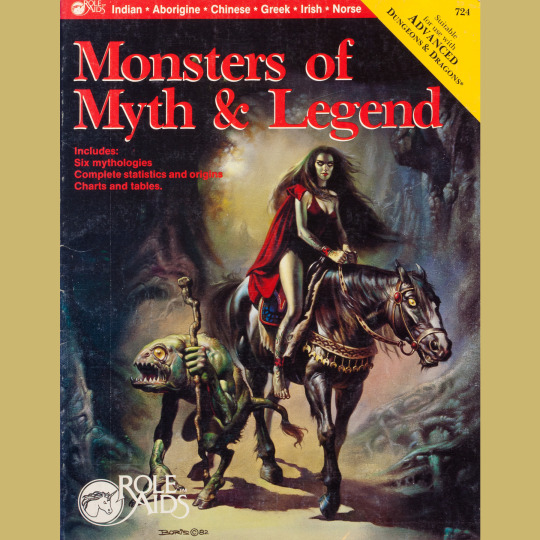
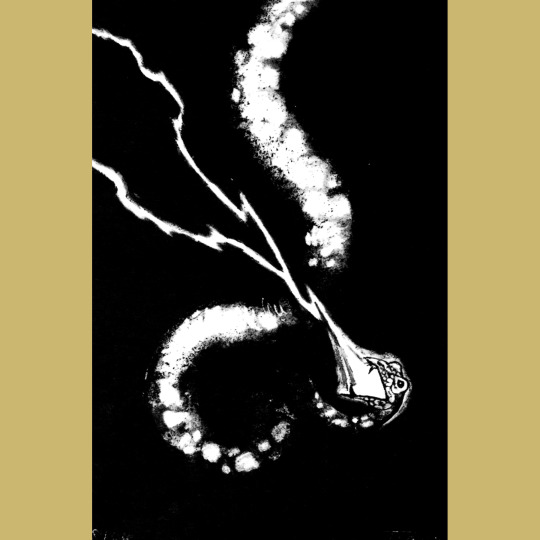
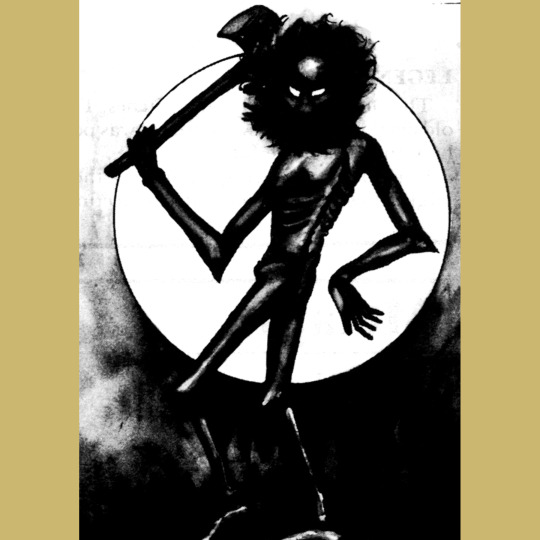


Love a monster book. This is Monsters of Myth & Legend (1984) for Mayfair’s Role Aids line of D&D sourcebooks. As the title tells you, this is a collection of monsters drawn from mythology. Four groupings of them are tied to specific cultures: Norse, Irish, Greek, Chinese. Two other draw broadly from the myths of people living in large regions but which belong to many distinct cultures: native American and Aboriginal Australians.
The mix is pretty solid. I particularly appreciate the monsters from Australia, which are often overlooked in this sort of thing — and even here, I can think of a couple more I would have liked to have seen, like the Pangkarlangu (neolithic cannibals), though it is nice to get attributes for Malingee (shadow spirits with burning eyes) and Murgah Muggulu (a kind of dream spider). Weird that there are still some deep cuts from Greece — maenads, mares of Thrace, even Scylla — who don’t have D&D attributes. The China chapter is probably the most robust, providing a variety of spirits and monsters that have multiple potential applications in the game. China also has a giant with no head, which is maybe the most delightful monster in the whole book.
This is maybe one of my favorite Boris Vallejo paintings that were recycled for Role Aids covers. It downplays physique and features a rad monster, both of which seem unusual for Boris. Its more atmospheric, too, a bit more in line with Frazetta, honestly. The interiors are by Teanna Byerts and Robin Wood. I don’t dislike them, but they do seem diminished by tight deadlines, if I had to guess.
#roleplaying game#tabletop rpg#dungeons & dragons#rpg#d&d#ttrpg#Mayfair#Role Aids#Monsters Of Myth And Legend
84 notes
·
View notes
Text
“Cheryl? Where is the file for the next appointment? I can’t find it anywhere.”
“It’s the folder with the green tab,” Cheryl called from her desk at the front of the tiny office.
There was the sound of many papers shuffling around and finally an “aha!”
“The Rainbow Snake?” Came the voice from the office. Cheryl’s boss often read out loud when they were studying a client. Just a weird quirk of theirs. “Australian Aboriginal Deity. Oh I do remember them. We were at a party together… 2,000 years ago give or take. I don’t think they’ll remember me, ah well thems the breaks. Let’s see… hmm… I can see that this is going to be a problem Cheryl. Damn colonialists. I wish we could make the British gods fade away. Fucking King Arthur deserves to be relegated to the dust bin. I can tell that we’re going to need some deep cuts on this one. Start making a list of Australians we can contact, I have a feeling.”
Cheryl did as she was told. Her boss was almost always right about these things. She knew what the gods wanted before they even got here.
Several minutes later there was a knock at the office door. Cheryl got up to open it and invited in the dark skinned person and the beautiful snake they wore like jewelry but that might have only been because the snake itself was a living work of art. Like living breathing stained glass.
As Cheryl escorted the Rainbow Snake in, her boss came out and bowed deeply to their guest.
The chipper woman had tied back her full brown hair and smiled widely at the Snake and their human escort.
“A pleasure to meet you again,” the boss said, “it’s been many centuries but I am glad to see you once more. Please come in to my office. Would you care for any refreshments?”
After settling and getting water for the Rainbow Snake, Cheryl sat back down outside the office and listened to the pitch. She never got tired of listening to it.
“How can I help you?” Her boss asked.
“We heard that you can help us gods. Stop us from fading. We need faith. We need followers. The people are dying, the language is dying,” said a dual voice. The voice from the snake, and the voice from the human.
“We can do that. Sort of. I am sorry to say that it’s not a direct thing. I don’t just snap my fingers and make you some new believers. Human beings a wonderful little creatures. They crave us. They need us even if they don’t believe in us anymore. They want our stories and our myths. And that is what I provide. Stories.”
“How does that help us?”
“Do you know how down bad the Norse were? The Christian’s basically destroyed their religion, all we know of it is this bastard version of what was left after the Jesus freaks invaded. But then the comics happened. The Mighty Thor! And don’t get me started on Neil Gaiman and his Sandman and American Gods stories. I send that man a fruit basket every year. I love him. Have you seen how well the Norse pantheon is doing? Loki has seventeen penthouses, and more belief than he knows what to do with.”
“Bah. Western religion. White religion.”
“You are right. I am sorry that was a poor example. Perhaps I should have started with Māui and how well he’s doing with that Disney film Moana. I set that up.”
“You did all of that?”
“Well. Not directly. You know how us gods work. I gave some inspiration here and there. Got a writer to have an idea. Got a director and a bunch of executives to see the bigger picture and how it could be a hit. They did the rest themselves. Like I said, whether or not they know it, humans want us.”
“You can make me a hit movie?”
“Or a TV show or a video game. Those are hard though. Movies are kind of easy now a days, TV is having a resurgence now but you run the risk of cancelation and things like that, video games can be hit or miss honestly. Only the Greeks and Norse really pulled that one off and hoo let me tell you they paid for that one. Great games but still. I don’t want to look at those God of War games ever again. Books are easy. Worked really well for the Greeks and some of the Egyptians. Rick Riordan does great stuff. It all depends on what you want.”
“I can have anything?”
“Sure. Internet stories are easy. Quick and cheap but you are really gambling with the payoff. Could be either a total wash or go viral. Not something I can really recommend but if you need something now it can be done. Movies or tv can be great but there are also risks. It might be two or three years before you see anything.”
“Do I get to choose who does the work?”
“A little. I can influence certain people but sometimes the best person for the job is some down on his luck writer in a hovel in LA. Sometimes it’s Neil. But Neil is expensive.”
“I want a movie, I want it to be written by one of my people.”
“I can do that. But the problem is that reach might be very tiny. There are plenty of Aboriginal writers, I’m sure some can even be extremely talented, but something big and grand and bringing in all the faith and worship and stories you may way may be limited. If you want the Disney treatment you have to give up a whole lot of control.”
“No. I want it to be of the people.”
“Very well. Now, I can influence and give inspiration all over. I can even get this in the right people’s hands. But it is always a crap shoot. All I need to do is channel some of your power into the right person when I find it. Then creativity takes over, they do their work, I nudge some agents and companies their way and if we’re lucky you see some return on investment in a couple of years.”
“What do you get out of this process?”
“My dear, I’m the Muse. I feed off the creativity. These artists come to me most of the time. I just set them up with gods who need a little faith. And six points on the back end. I have a lot of alimony to pay.”
50 notes
·
View notes
Text

Koala: A Natural History and an Uncertain Future by Danielle Clode is a fantastic nature book about the history, biology, and future of the koala. Clode dispels myths (no, they don't have abnormally small brains) and raises fascinating questions (is it smart or stupid to conserve energy for 20 hours a day? how many other animals know to ask humans for help? is it really an evolutionary failure to only need what's in your tree to survive?). Yes, as you all know, I love koalas, but I still say with certainty that this is a well-researched, readable book about an animal we don't actually know much about, yet have mythologized intensely.
Koalas existed 100k years before people did; they were decimated by colonization and all that followed, but narrowly survived (perhaps thanks to the intervention of one nature-loving man); now, myths of them as disease-ridden, stupid, silly, useless creatures abound, when actually they are fascinating, un-studied, curious, social, and intelligent creatures. Clode combines philosophy and history to write a compelling book about koalas that establishes them as incredible creatures (who might be imminently at risk from climate change and its impact).
She tracks the evolution and history of koalas, and analyzes why we've been so quick to dismiss them as creatures of interest over the decades, while bringing in Dreamtime (Aboriginal) stories to illustrate the koala's place in Australian habitats. She's a superb researcher in that she knows the right questions to ask, goes to the experts to get her answers, and thinks something through, from its hypothesis to its answers to its remaining questions. Compelling, scientific and rich but still intensely readable.
34 notes
·
View notes
